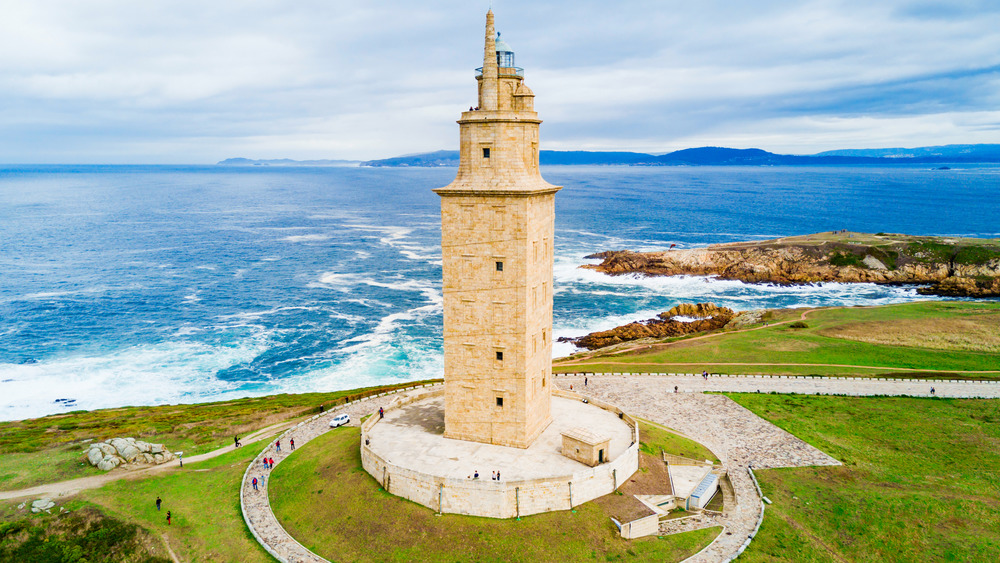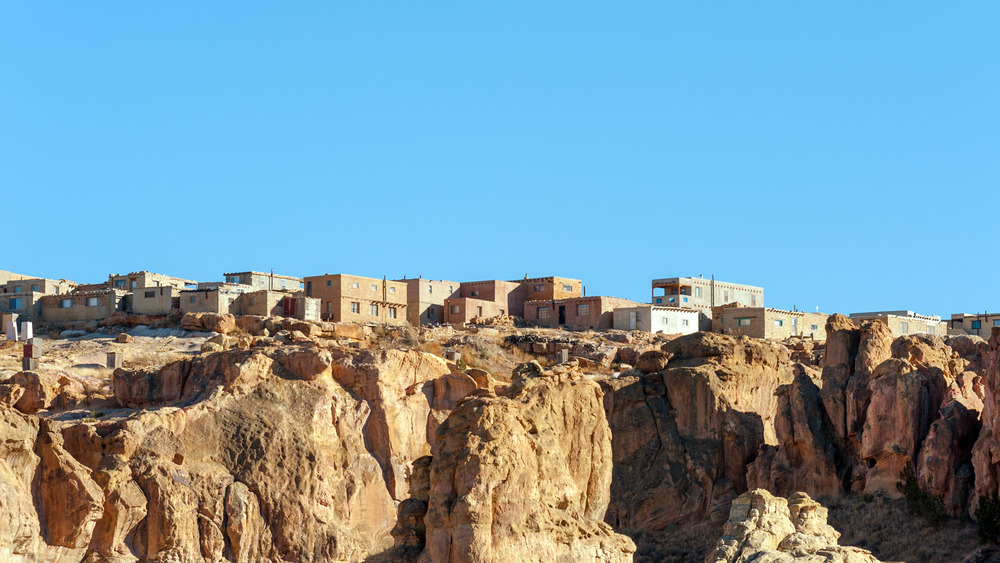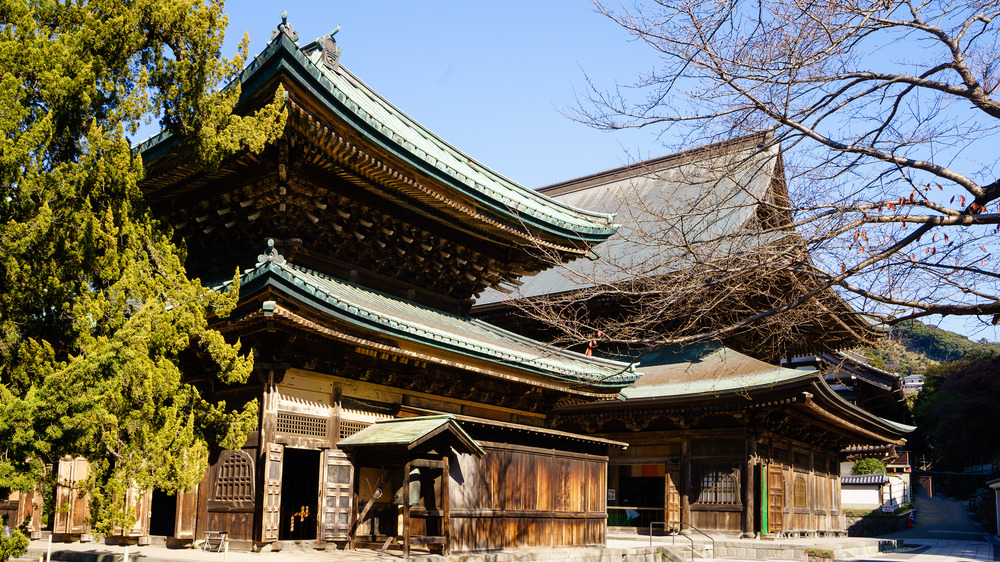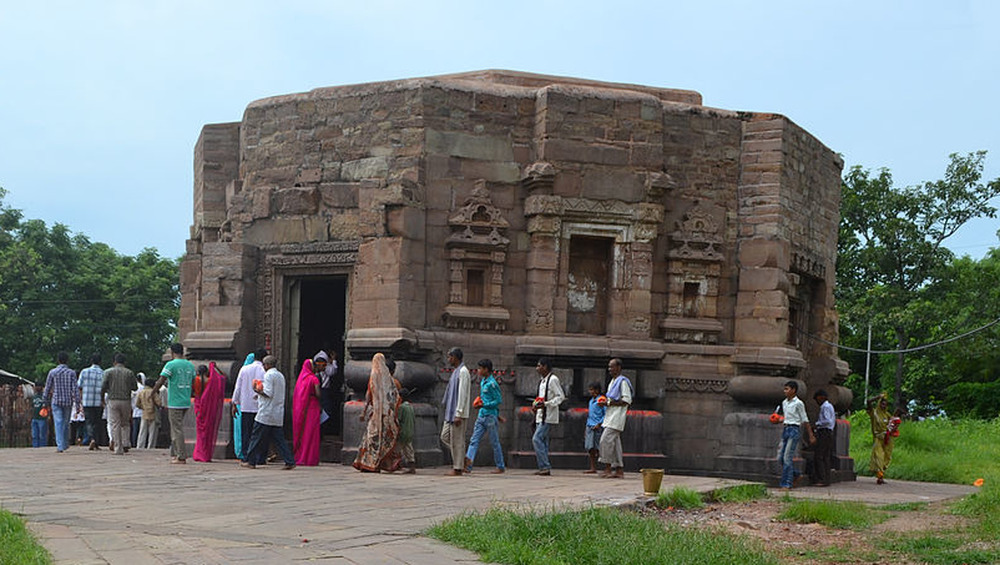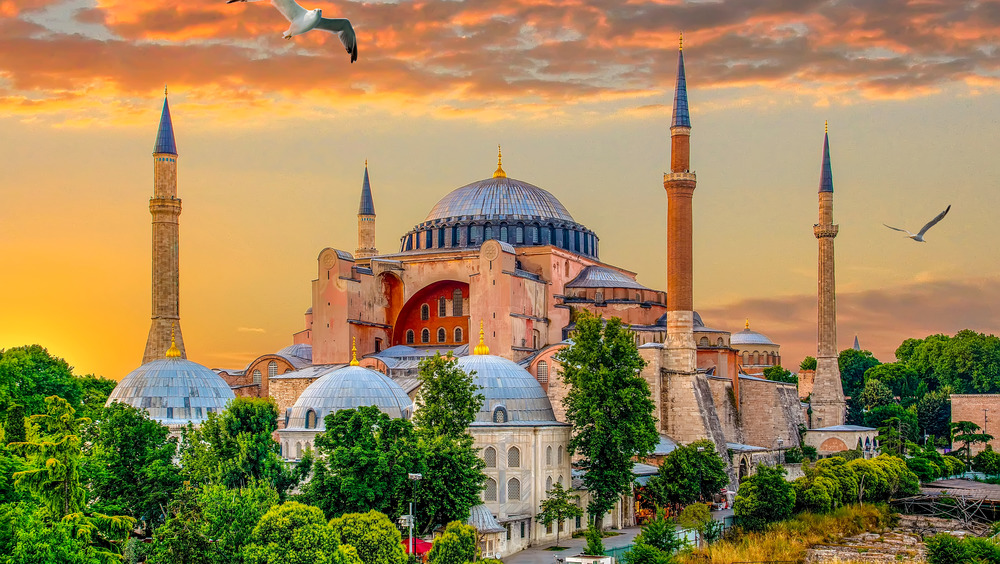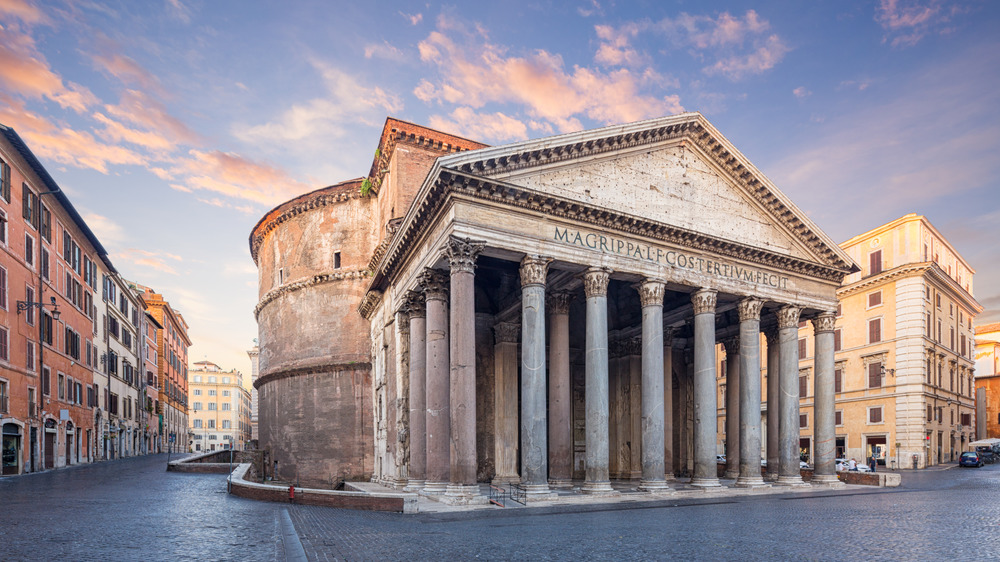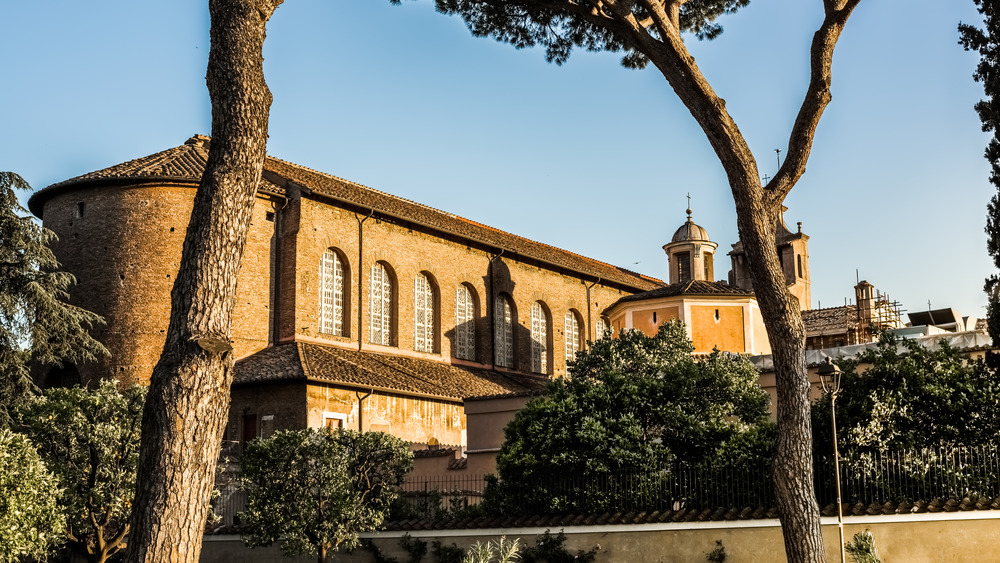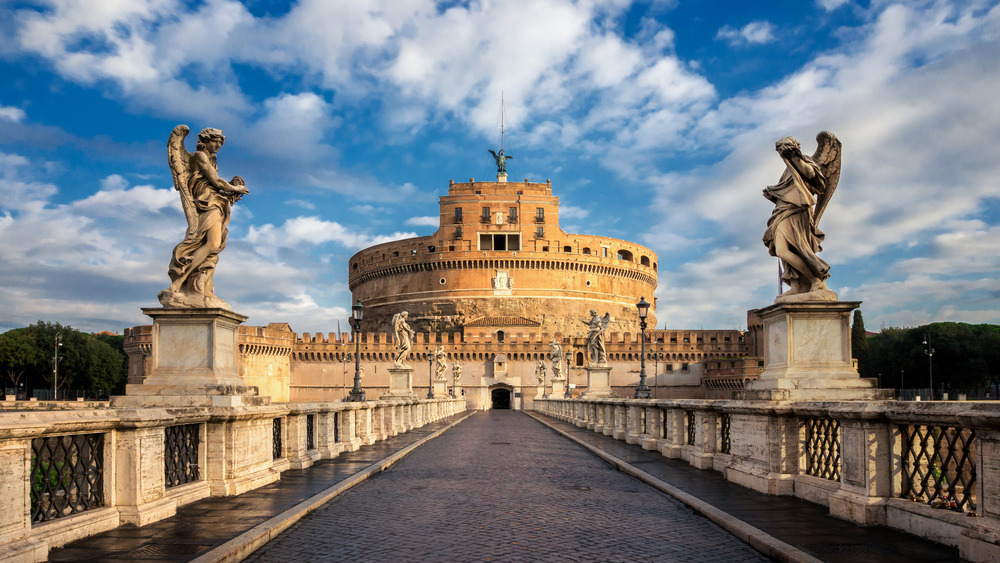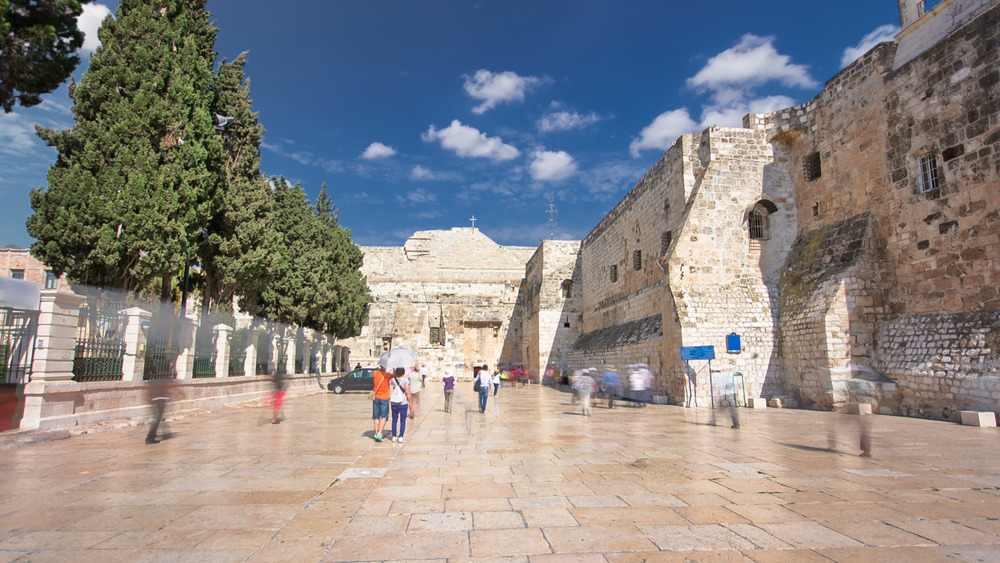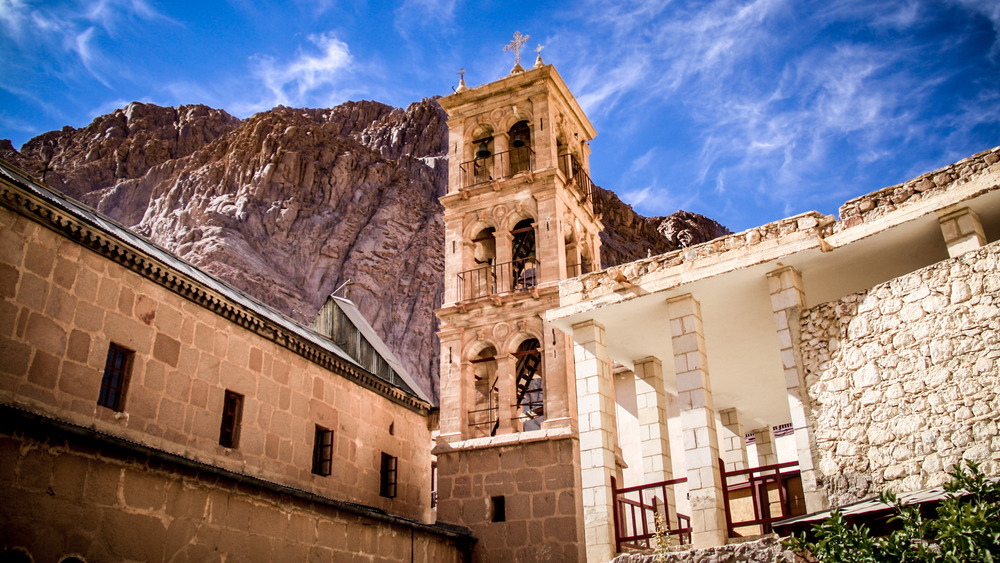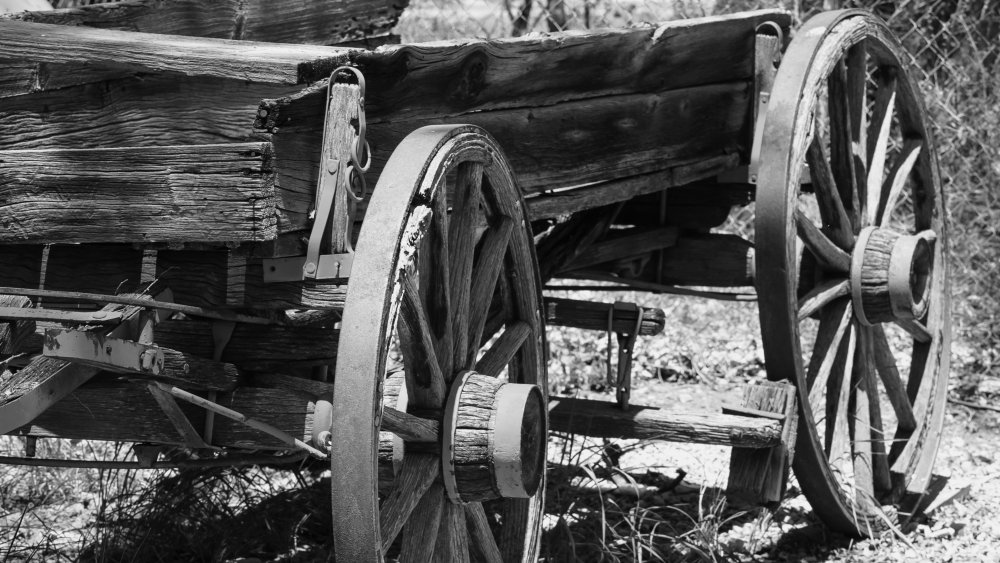
The Oldest Buildings Still In Use Today
Humans figured out a long time ago that living sheltered from the elements is preferable. And while caves worked perfectly well for a while, it’s hard to add a conservatory or second floor or even a window. This meant humans had to start building, well, buildings.
Plenty of those early structures — the vast majority — are long gone. It makes sense. While a wolf might be able to blow down houses made of straw and sticks easily, even that brick house with its smug pig owner is going to be ground down by the elements over a couple thousand years.
Amazingly, some buildings from the really, really olden days are still around. And not talking about buildings like the Great Pyramid, which survived by essentially just being a massive pile of stones — and is, today, still just a massive pile of stones. These are buildings that were made to be used by people regularly and that a thousand or more years later are still in use, sometimes doing the same job they were built for in the first place. These are some of the oldest buildings still in use today.
The Tower of Hercules still lights the way after thousands of years
The acient Romans were really good at conquering and also really good at building stuff once they took over. And they built things to last a long time. That’s why Europe has tons of Roman buildings still standing, but there’s only one lighthouse, which not only still exists but is still a lighthouse — the Tower of Hercules in Spain. According to UNESCO, it’s “the only lighthouse of Greco-Roman antiquity to have retained a measure of structural integrity and functional continuity.”
Since it’s still a lighthouse, the Romans obviously picked a great spot for it. But their reasoning wasn’t just based on protecting ships. Atlas Obscura says the hill the lighthouse is located on may have been connected to the Roman myth of the Twelve Labors of Hercules. After Hercules killed the giant Gerylon with an arrow dipped in Hydra’s blood, he buried him. Since giants are big, this resulted in a hill. Thus, the Tower of Hercules, built on top of the supposed burial site of Gerylon.
While historians aren’t sure of the exact date the lighthouse was completed, it was around the end of the first century A.D. To be completely honest, the lighthouse needed a bit of help to stay in such good shape for almost 2,000 years. In the 1700s, a restoration made it more structurally sound and a bit taller. But it’s still an impressive work of ancient architecture that remains useful today.
The Acoma Pueblo has housed Native Americans for centuries
There’s no question the Acoma Pueblo in New Mexico is extremely old. The National Parks Service says Acoma is “one of the oldest continuously occupied communities in what is now the United States.” It’s estimated it was founded as early as 1100 A.D., although local oral history says people have lived there “forever.” This is reflected in its name — in the local dialect, Acoma means “a place that always was.”
When the Spanish showed up in the 1500s, things stayed peaceful with the Acoma for a while, probably helped by the fact it was so isolated and difficult to get to. But eventually hostilities broke out, and the Spanish took over in the early 1600s. They built a church, tried to force everyone to convert to Catholicism, and generally were big meanies. While many of the adobe buildings were destroyed, there are still parts believed to date to the 1100s, and the newer buildings (“newer” being a relative term) are believed to be in the same places as the originals.
These days only a few dozen people live there, and there’s no electricity or running water. But it’s still an important location for the Acoma, and the nation as a whole, for its deep historical roots. And while the history of conquest is painful and controversial, even the Catholic church is still there and well-maintained, a place where Indigenous beliefs now mix with Christian ones.
The Nanchan Temple proves wood can last forever if you're careful
Stones that last hundreds of years are one thing, but wood is something else. Amazingly, China is home to the Nanchan Temple, a complex whose main hall is the oldest wooden building in the country. According to China Culture, an inscription on a beam in the temple says it was built in 782 A.D. This places it smack-dab in the middle of the Tang Dynasty.
While China Daily says no one is actually sure if that is exactly when the temple was built, it does seem to be from that period. If you happened to be an expert on Tang architecture and art, you’d know when it was built as soon as you stepped inside. The square, symmetrical building is “a typical structure style” from that dynasty. Of the 12 columns, three are thought to be original. There are also 17 multicolored statues on the altar, which are still noticeably Tang even after many repairs and new coats of paint over the years. The largest statue, representing “Sakyamuni, the primary figure in Buddhism” sitting cross-legged, is such an exceptional example of Tang craftsmanship that it’s been a National Key Cultural Relic Protected Unit since 1961.
The temple has needed work done from time to time and saw repairs in the Song (420-479 A.D.), Ming (1368-1644 A.D.) and Qing (1644-1911 A.D.) dynasties.” The biggest restoration was in 1973, which brought the main hall of the Nanchan Temple back to its “original splendor.”
Mundeshwari Temple has been a place of worship for many centuries
India is an ancient culture with an ancient religion and an ancient temple to boot. Mundeshwari Temple in the state of Bihar has been used for worship for an astonishingly long time, without stop. According to its official website, the Archaeological Survey of India dates the temple to 108 A.D., although some others put the date a bit earlier. It was originally dedicated to Lord Shiva and Shakti, but the site explains, “even though the Shiva linga is installed in the centre of the sanctum, the main presiding deity is Devi Mundeshwari,” and other gods are represented as well.
While worship has continued basically uninterrupted, making Mundeshwari the “oldest functional” temple in the world, it has taken a beating over the centuries. The Indian government has launched a restoration project, cleaning soot off the inside, repairing idols, making appropriate displays for the antiques, and even picking up and cataloguing the many small fragments of stone that have come off the building. They’re even adding modern technology, like solar powered lights. But some damage can’t be fixed, like “the temple shikhara or tower,” which was destroyed, and the original roof, which had already been replaced. Even though the eight walls are still standing, they have taken “substantial” damage.
That doesn’t matter to the pilgrims who still come to the temple to worship by the thousands, as they have for almost two millennia.
The Hagia Sophia is still causing controversy
Back when Istanbul was Constantinople, the Byzantine emperor Justinian I decided the place needed a truly massive church. And he wanted it fast — it only took about six years before the Hagia Sophia was finished in 537 A.D., according to the Encyclopedia Britannica. The architects were absolute geniuses, creating something “wholly original,” with marble columns and beautiful mosaic, and, most famously, a massive domed ceiling.
The Hagia Sophia has been through a lot, even for a building that’s 1,500 years old. There was the earthquake in 558, the dome partially collapsed a couple times, and looting by Crusaders in 1204. That’s right, the knights looted a Christian church while on their way to fight Muslims.
It didn’t stay a church, though. After its conquest by the Turks in 1453, Constantinople became Istanbul, and the Hagia Sophia became a mosque. By the 1500s, four minarets had been added. It remained a mosque for centuries, until the Turkish president turned it into a museum in 1935. As an important historical location, with priceless mosaics, it’s no surprise UNESCO designated the Hagia Sophia a World Heritage site in 1985. The museum was the most popular tourist destination in the country. But then, in 2020, Turkish President Recep Tayyip Erdoğan decided to convert the museum back to a mosque, despite huge international uproar. While people can still visit, some of the Christian mosaics are shielded from view, in keeping with rules of the Islamic faith.
The Pantheon managed not to burn down, eventually
Even with the plethora of buildings the ancient Romans built, the Pantheon is extremely notable. One major reason is it’s still in amazing shape for a 1,900-year old. Ancient History Encyclopedia calls it the best preserved of any ancient Roman building, which, considering how many are still around, is quite impressive.
Built around 125 A.D., no one is quite sure what the Pantheon was originally used for. It certainly looks like an ancient Roman temple, but temples were built to honor Roman gods individually, and there is no record of a sect that worshiped all the gods together. There’s a theory that it might have been a place for the emperor to come, surrounded by statues of a bunch of gods, and be like, “Look at me, I am a god too. I’m just as good as all these guys.” The idea might have offended those gods, though, since the current Pantheon is built on the site of not one, but two earlier Pantheons, both of which were destroyed by fire within a 30-year period. (The second one was struck by lightning, which is a total Roman god move.)
But the third one stayed up! It got a bit of work done over the years, with some repairs in 202 A.D. and three columns replaced in the 1600s. Whatever its original use, it became a Catholic church, St. Mary of the Martyrs, in 608 A.D., and it remains one to this day.
Kirkjubøargarður is the family home to end all family homes
The Faroe Islands are located in the North Atlantic, between Iceland and Scotland. It’s kind of amazing that people live there, but they have been for a long time, as evidenced by what the Vintage News says is “one of the oldest still inhabited wooden houses [in] the world.”
But how old could a wooden house, one that is no match even for an angry wolf, possibly be? Try over 900 years old. Called Kirkjubøargarður, it was originally a Catholic seminary. Today, it’s home to the largest farm on the islands. The farm has been owned by the government for almost 500 years, but for a whopping 17 generations the tenants have been the Patursson family, with control of the farm passing from eldest son to eldest son.
Since the Faroe Islands don’t have any forests, and wood is almost impossible to get, the house is even more astonishing. Legend has it the wood washed up on the beach one day, all bundled and numbered ready for construction. Not all of the house is almost a millennia old, although even the “new” sections have been around hundreds of years. The oldest room is the Roykstova, or smoke room, and since it doesn’t fit the foundation where it is now, it’s thought it must have been moved at some point. The oldest known document produced on the Faroe Islands was written in the house’s loftstovan, or loft room, in 1298.
The Basilica of Santa Sabina has many surprises
The early Christian church was still figuring out how to be a church in the organizational sense but also in the literal building-churches sense. No one knew what a church building was supposed to look like. Since so few of them from the first half of the first millennia A.D. still stand, the Basilica of Santa Sabina is super special. Atlas Obscura says it’s considered “the best preserved example of Paleochristian architecture in the city of the Popes,” aka Rome, and was completed sometime before 440 A.D.
If that description makes it sound boring, don’t worry, it is far from it. There are plenty of weird details and legends about the church. A large marble door frame and 24 columns lining the inside are thought to have been taken from an older pagan temple and repurposed. The door inside the marble frame is 1,600 years old and has one of the first known depictions of Jesus being crucified. (When the door needed some restoration in the early 1800s, it appears someone carved Napoleon’s face over that of the pharaoh, one of the villains from the Old Testament.)
There’s also a large, dark stone displayed on a column. While it’s probably just a Roman weight, local legend says the rock is the lapis diaboli — or the Devil’s stone, for people not up on their Latin — which was thrown at St. Dominic while he was minding his own business, praying in the basilica.
Castel Sant'Angelo has gone through some changes
The Castel Sant’Angelo has spent the last 1,900 years trying to find itself. Sure, physically it’s in Rome, but what kind of building is it meant to be? These days, it’s settled on being a museum, but that was only started last century. It could change tomorrow, because Castel Sant’Angelo has tried it all.
According to the Encyclopedia Britannica, the building started out in 139 A.D. as a mausoleum of the Roman emperor Hadrian (he of the English wall fame) known as the Hadrianeum. Some more emperors were buried there as well, before it was converted to a fortress in the 400s. It was in the perfect location to protect one of Rome’s most important bridges from all those barbarians who were trying to sack the city.
Then in 590, in the middle of a terrible plague, Pope Gregory the Great had a vision of the archangel Michael over the building. It was given a new name, and soon it had a new purpose. Thanks to a secret tunnel connecting the Castel Sant’Angelo to the Vatican, the popes of the Middle Ages used the fortress as a place to hide when things went bad, like when Clement VII tried to escape the Holy Roman emperor’s troops in 1527. Since popes couldn’t hide out just anywhere, the place got a nice makeover. But it probably wasn’t as comfortable for the next occupants, when it became first a prison, then a military barracks.
The Church of the Nativity has the ultimate location
The Byzantine Emperor Justinian liked his major building projects, and one of his most notable ones was the construction of the Church of the Nativity in Bethlehem in the sixth century. According to See the Holy Land, by 160 A.D., legend had it that Jesus had been born in a specific cave. No, you didn’t hear wrong in Sunday School — the Bible doesn’t say Mary gave birth in a cave, even in the original language. But since locals used (and still use) caves to house their animals, it isn’t that far off.
The emperor Constantine originally built a church on the location in 339 A.D., and Justinian’s replaced it. The cave had to be enlarged so all the visiting pilgrims could fit inside, and to mark the location Jesus came into the world, a manger made out of silver was installed. (St. Jerome was appalled, pointing out that a silver manger wasn’t exactly keeping with the humble beginnings of Jesus.)
The Church of the Nativity came very close to being destroyed in 614, when the Persians invaded. While they destroyed many other churches, when the invaders noticed a mosaic of the Three Wise Men wearing Persian dress, they decided to spare it. Since then, the Church of the Nativity hasn’t been so lucky. After the lead roof was looted by the Turks in the 1600s, many of the interior mosaics were ruined. The church needed a major restoration as recently as 2013.
The Monastery of Saint Catherine has an amazing library
When it comes to important locations in the Bible, it’s hard to top the place Jesus was born, but the Monastery of Saint Catherine comes close – according to Aleteia, legend has it the building is on the site Moses spoke to the Burning Bush. Built during the reign of, you guessed it, Emperor Justinian, sometime between 548 and 565 A.D., it’s set at the base of Mount Sanai in Egypt.
It was built as a monastery and is still one today, which is pretty impressive. But what is even cooler is the library. Since the monastery opened, the library has never closed its doors. This is no regular library, either. It has “the second largest collection of codices and manuscripts in the world.” Only the Vatican itself has more.
While all the manuscripts are priceless, the library has some that are especially exceptional. These include a biblical text called the Codex Sinaiticus from 345 A.D., a fifth century copy of the Gospels, a copy of a document about the “lives of the holy women” dating to 779, and a copy of the Apology of Aristides (particularly important since the original version has been lost). There are plenty of Arabic manuscripts in the collection as well, perhaps most notably a decree by the prophet Muhammad, where he promises the monastery will be protected, not have to pay tax, and the monks exempt from serving in the military under Muslim rule.

Is Biggie Smalls Buried Anywhere?

The Truth About The Deadly Kaprun Railway Disaster

This Is How Nirvana Really Felt About Their Legendary "Unplugged" Show

Here's How Queen Victoria Would've Looked In Color

The Messed Up Truth About Joan Crawford

The Untold Truth Of Nazi Filmmaker Leni Riefenstahl

The Plague Has Been Around Longer Than You Probably Thought

Can Your Personal DNA Code Be Sold To The Highest Bidder?

The Tragic Death Of Stevie Ray Vaughan

What Twitter's First Employees Are Doing 15 Years Later
